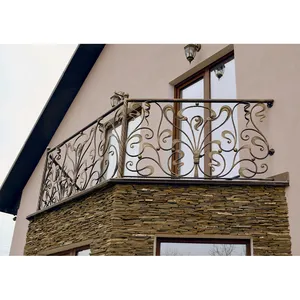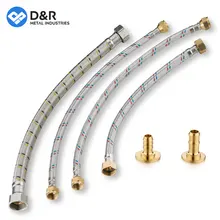Introduction
Revamping your outdoor space can be a game-changer for your home's aesthetics and value. One of the most impactful ways to do this is by installing a wire railing system on your deck. These systems offer a blend of durability, minimal maintenance, and unobtrusive views, making them a popular choice for homeowners. This comprehensive guide will walk you through the benefits of wire railing systems, the types available, planning and installation processes, safety considerations, and maintenance tips. Whether you're a DIY enthusiast or a professional, this guide will equip you with the knowledge you need to transform your deck with a wire railing system.
Understanding Wire Railing Systems
Wire railing systems are popular choices for deck railings. The standard cable spacing is 3 inches, with a post spacing of 4 feet. Cable diameters vary, with the number of cable rows needed depending on the railing structure. Hardware placement is variable, usually at each end of a continuous cable run. Cable sleeves are used for corners or level changes without adding tensioning hardware. Some systems represent a through post tensioning system, with tensioning and fastening done on the back side of the post.
Benefits of Wire Railing
Wire railings, also known as cable railings, offer numerous benefits. They are easy to install, requiring minimal tools and can be handled by a skilled homeowner or a professional. They are highly durable, withstanding harsh weather patterns, and require minimal maintenance due to their marine-grade stainless steel hardware. Cable railings can increase home value, as they can last for decades when properly mounted. They blend well with different home styles due to their clean lines and material versatility. Lastly, they provide unobtrusive views, making them ideal for homes near or overlooking water.
Types of Wire Railing Systems
Wire railing systems, also known as cable railing, come in two main types based on fastening methods: swaged and swageless systems. Swaged systems use force to compress the fitting to the cable, creating a strong connection. Swageless systems use proprietary hardware where the cable is inserted into the fitting, but a locking mechanism prevents the cable from being pulled out. The other differentiator is the post types: metal or wood. Metal posts offer a sleek, modern look with strength and durability, while wood posts provide a warm feel and are more cost-effective.
Planning Your Wire Railing Installation
Planning your wire railing installation requires a good plan, whether you're doing it yourself or hiring a professional. Start by understanding your needs and local building codes. The materials for your railing system primarily consist of cable wire, railing posts, and cable components. The cable is flexible and will deflect when pressure is applied, hence the need for a 3” maximum cable space and 4-foot maximum post space. To determine how much cable you need, multiply the length of the run by the number of cable runs needed and add a 20% allowance.
Assessing Your Deck
When assessing your deck for a wire railing installation, consider the post spacing and lateral stability. Proper post spacing ensures cable tension and stability. The spacing between railing posts should not be too large; otherwise, the cables will not sustain tension. Also, the lateral stability of the railing is crucial. A building inspector may test the railing's deflection by leaning on or pushing a section of the railing. The railing should feel solid all around, not just at the post locations.
Choosing the Right Materials
When choosing materials for your wire railing system, consider factors like durability, aesthetics, and maintenance. Stainless steel posts are popular for their sleek, modern look and strength. They're available in various finishes and are easy to install. Alternatively, wood posts offer a warm, contemporary feel and are often more cost-effective. However, they may require more maintenance. The infill of your railing is typically made from strands of stainless steel braided together. For a rust-proof alternative, consider rod infill made from stronger, 2205 stainless steel. Your choice of materials will significantly impact the cost, performance, and maintenance of your wire railing system.
Safety Considerations
Wire railing systems, such as cable railings, are not only structurally sound but also safe for children. Despite concerns about the 'ladder effect' of horizontal railings, studies show that injuries from such railings are minimal compared to other household hazards. It's important to note that the responsibility for safety lies not only with manufacturers and contractors but also with parents or guardians. At the end of the day, railings are designed for fall protection and should be considered as such. Therefore, when planning your wire railing installation, safety should be a top priority.
Installing Your Wire Railing
Installing a wire railing system involves careful planning and execution. You'll work with three types of posts: end, corner, and mid posts. Cable railing requires support (mid posts) every 4 feet to maintain cable spans with minimum deflection. The attachment of the post to the decking is crucial, and local code requirements should be checked. Cable should be cut only after all components are in place. Once installed, tension your cables following the proper sequence. Remember, you may need to tension your cables a second time depending on your railing material and design.
Preparation Steps
When preparing for wire railing installation, start by preparing the deck frame for the railing posts with blocking between the framing at the band joists. This is where the posts will be secured later. Use a 'layout by centers' principle to ensure evenly spaced posts. After the decking is installed, perform an accurate post layout on the decking, marking the center of the post locations. For composite decks, use clear tape and a marker for visibility. Once post locations are marked, it's time to install the railing posts, starting with the corner posts.
Installation Process
Installing wire railing begins with preparing the deck frame and marking post locations. After securing the posts, the cable is threaded through the holes, starting from the bottom. The cable is fitted with receiver fittings and push-lock fittings, which work like zip ties to secure the cable. The cable ends are cut and capped for safety. The final steps include installing the pull-lock and receiver for tensioning and adding a top rail for a finished look.
Post-Installation Checks
After installing your wire railing, it's crucial to conduct post-installation checks to ensure safety and compliance. Inspectors often focus on aspects like cable tension, lateral stability, and stainless steel cable spacing. Proper post spacing and frame construction can help maintain cable tension. Lateral stability is ensured by adequate structural backing for post connections. Cable spacing should be a maximum of 3 inches to pass inspection. Remember, changes after inspection can be costly, so it's best to follow manufacturer guidelines and recommended practices from the start.
Maintaining Your Wire Railing
Maintaining your wire railing is crucial for its longevity and aesthetic appeal. Regular cleaning and maintenance should start from the day of installation. Avoid harsh chemicals and abrasives, instead, use high-quality car wash soap for cleaning. Routine rinse and wipe every week helps to remove fingerprints, dust, and light dirt. For stubborn stains, use a light passivation agent, following manufacturer instructions. In case of paint splatter, use a gentle solvent with immediate rewashing. Remember, improper use of chemicals can cause irreversible damage to your wire railing.
Routine Maintenance Tips
Maintaining wire railings involves regular cleaning to remove dust and dirt. If rust is detected, it should be removed with a wire brush and a rust inhibitor applied. Lubricating the cables with a silicone-based lubricant prevents stiffness and rust. Loose cables should be tightened for safety, and posts should be inspected for damage. Applying a protective coating every few years can help prevent rust and prolong the railing's life.
Troubleshooting Common Issues
Incorrect dimensions, structural instability, and improper cable spacing are common issues with wire railing installations. Incorrect dimensions can affect cable tension and lead to failed inspections. Structural stability is crucial for passing inspections and is not solely dependent on the size of the post. Cable spacing issues can lead to drooping between posts, resulting in building code violations. To avoid these issues, ensure accurate dimensions before ordering, check local building codes for structural requirements, and understand the appropriate installation for posts and cable tensioning.
Conclusion
Installing a wire railing system on your deck can significantly enhance your home's aesthetic appeal and value. It's a project that requires careful planning, understanding of local building codes, and meticulous execution. From choosing the right materials to understanding the installation process and post-installation checks, every step is crucial. Safety should always be a top priority, and regular maintenance is key to ensuring the longevity and beauty of your wire railing system. By following this guide, you can avoid common issues and ensure a successful installation. Remember, a well-installed wire railing system not only provides safety but also offers an unobstructed view, making your deck a perfect place to relax and enjoy the outdoors.












































 浙公网安备 33010002000092号
浙公网安备 33010002000092号 浙B2-20120091-4
浙B2-20120091-4